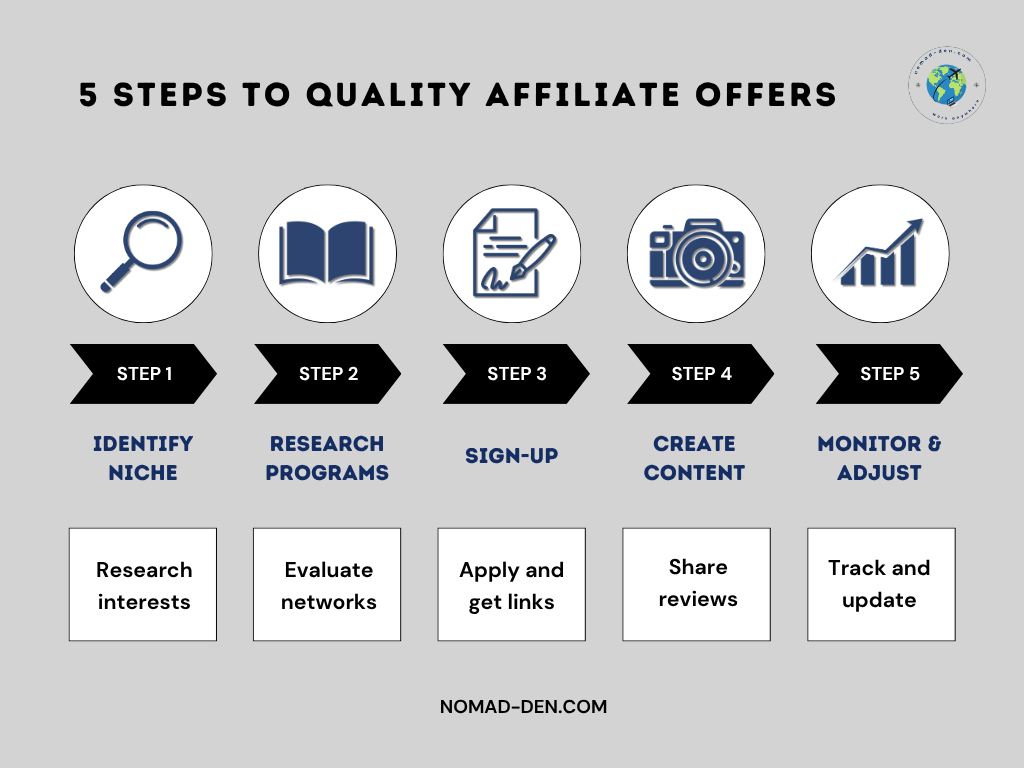
Affiliate Disclosure: This post contains affiliate links. If you click on these links and make a purchase, I may earn a commission at no additional cost to you. I only recommend products or services I genuinely believe in and that I believe will add value to my readers. Thank you for your support!
What is Affiliate Marketing?
Affiliate marketing is an arrangement where a retailer pays a commission to an approved affiliate on an external website for traffic or sales generated from their referrals. These referrals typically use affiliate links, which can be found across the web. In fact, affiliate programs account for 16% of all online sales.
As of 2024, the global affiliate marketing industry is valued at over $17 billion and is expected to grow to nearly $30 billion by 2027, with a compound annual growth rate of just under 10%. Over 100,000 companies worldwide use affiliate marketing platforms, with 11,400 of those based in the U.S.
If you’re wondering how to start affiliate marketing as a beginner, you’re in the right place. Affiliate marketing is a thriving industry, and offers a powerful opportunity to escape the 9-to-5 grind, work on your terms, and build a business that fits your lifestyle. Whether you want to earn a little extra or go full-time, it’s a flexible, scalable path — limited only by your creativity and dedication.
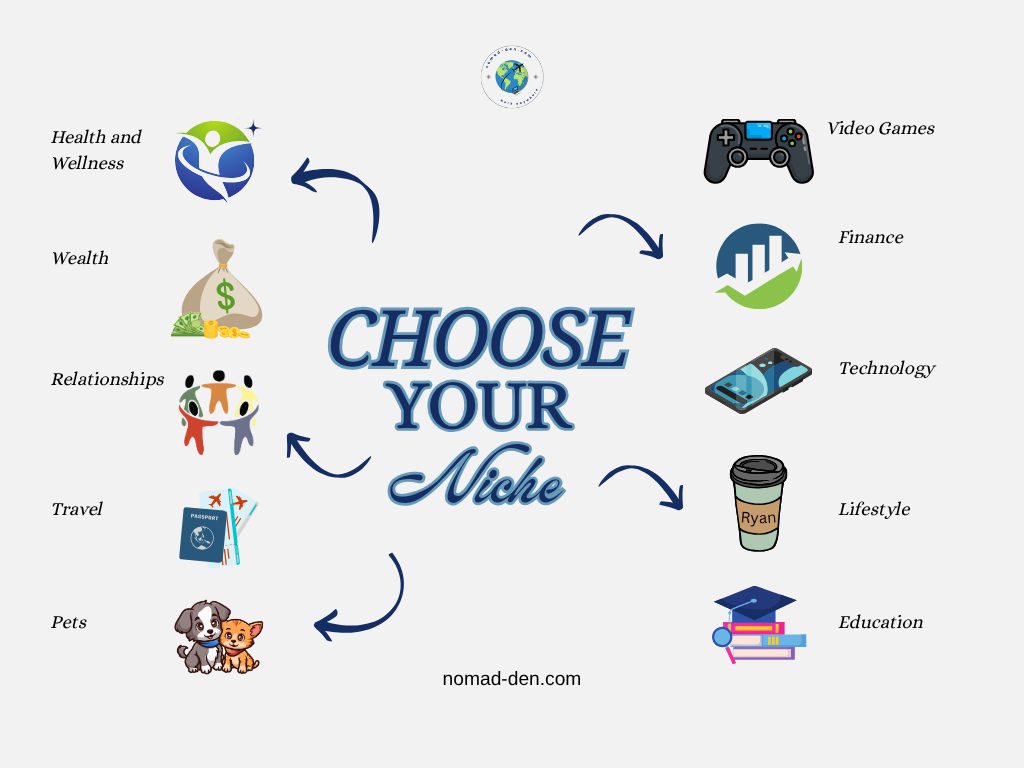
Choose Your Niche
Picking a niche to begin your affiliate marketing journey is crucial. Whether it’s your expertise, your passion, or both, you want to start off focusing on one topic or area of discussion. This approach helps you tailor your strategies to a specific audience, making your marketing efforts more effective and targeted.
There are over 100 profitable affiliate marketing niches to choose from. When selecting a niche, consider those with top paying affiliate programs or high commission affiliate programs to maximize your income.. Many of these niches are interrelated, as some products or services are sub-niches of larger categories. For example, health and wellness is a broad category that includes sub-niches like fitness, nutrition, mental health, and natural remedies.
It may seem overwhelming to choose from such a broad range, so let me simplify it for you. These are some of the most profitable affiliate marketing niches to help maximize your results — especially if you’re just starting affiliate marketing as a beginner:
- Health and Wellness
- Wealth
- Relationships
- Travel
- Pet(s)
- Video Games
- Finance
- Technology
- Lifestyle
- Education
There is no obligation to choose any one of these either, this list is just meant to help you narrow down your choices. Whatever you choose to start with, it is highly recommended you conduct proper market research on your chosen niche to ensure profitability before you invest too much time building your business around it.
Want a deeper breakdown of how to choose your niche and build your business? Check out my review of The Roadmap: Exclusive —a full course for beginners covering affiliate marketing, funnels, and more.
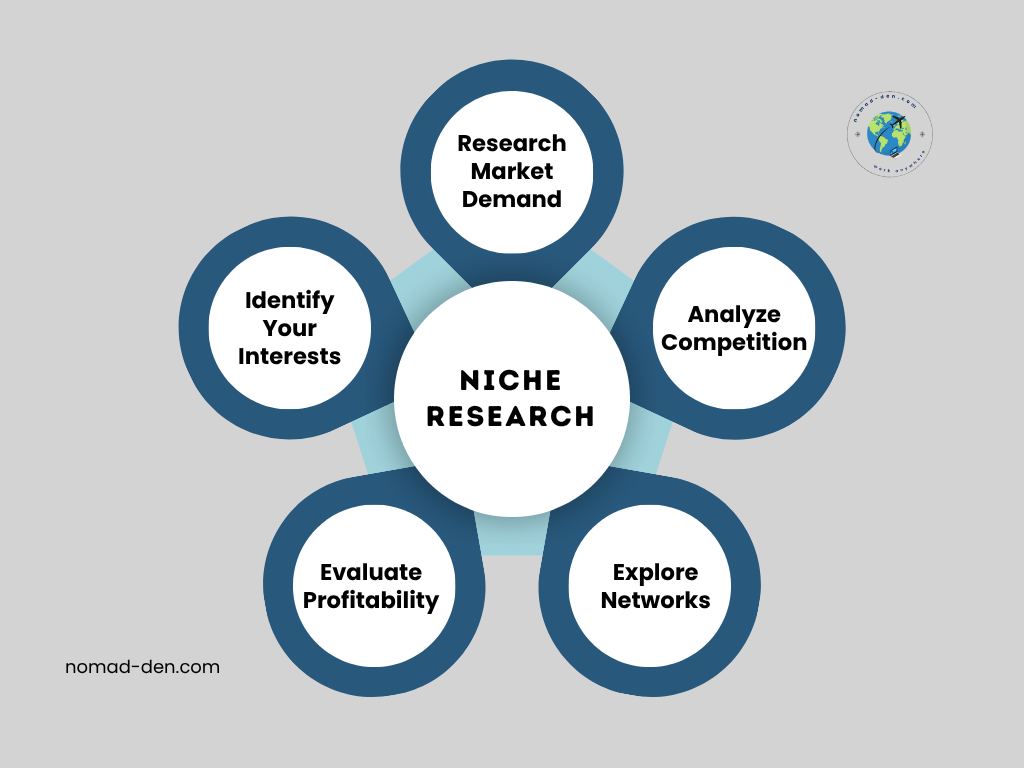
Niche Research
When researching your potential niche, follow these five essential steps to give your business the best chance at long-term success:
1. Identify Your Interests and Expertise
Start with what you know and love. This will keep you motivated and allow you to create content that is authentic and engaging.
2. Research Market Demand
Use tools like Google Trends and keyword research tools like Mangools to gauge interest levels and track emerging trends within your niche. Look for niches with a growing audience and sufficient interest, as this will increase your chances of success.
3. Analyze Competition
While competition often indicates profitability, study the landscape to find underserved segments, potential gaps in the market, or unique angles that can help you stand out.
4. Explore Affiliate Networks
Affiliate networks are platforms where you can find products and services to promote. There are even ways to start affiliate marketing with no money by using free tools and networks like Systeme.io and ClickBank’s affiliate program, which is known for its broad digital product selection and user-friendly payouts. Each network has different requirements and access levels. Some networks require you to apply separately to individual affiliate programs, with approval criteria varying by program.
Need help finding a solid affiliate program to get started? Check out this list of 5 free affiliate programs that are beginner-friendly and trusted by marketers worldwide.
5. Evaluate Profitability
Consider the potential for earning commissions. Look at the types of products or services available in the niche, their price points, and the commission rates offered by affiliate programs.
These affiliate marketing websites and programs are where beginners often get started:
- Clickbank: Known for classic “make money online” and info products; lots of digital-first marketers start here.
- Amazon Associates: Widely recognizable, appeals to beginners.
- Warrior Plus: Similar vibe to Clickbank, but often more digital-marketer-specific tools/courses.
- MaxWeb: Wellness-heavy, high-converting, digital-adjacent offers.
- Digistore24: Also info product–heavy, especially in MMO niches. If you’re wondering whether Digistore24 is legit — yes, it’s a reputable global network with thousands of offers., including Commission Hero, a well-known affiliate marketing course, is one of the top programs in this network.
- ShareASale: Broad network of real-world merchants; solid for blogs/niche sites.
- CJ (formerly Commission Junction): Higher-barrier, premium brands; great for those scaling.
By carefully selecting programs that align with your niche, you can increase your chances of success. Remember, each network and program might have specific requirements, so take the time to review and understand them before applying.
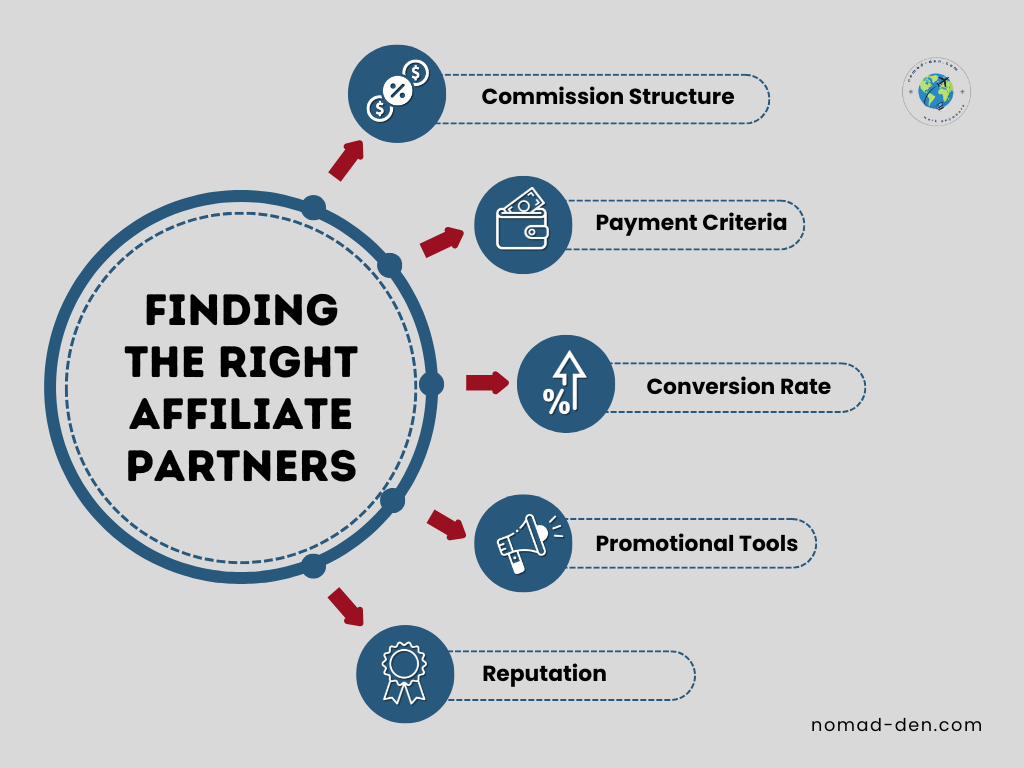
Choosing Quality Products and Vendors
After thoroughly researching your niche and exploring various affiliate networks, the next step is to carefully select the products and services you’ll promote. To ensure your success as an online marketer, consider these critical factors when choosing your affiliate partners and offers:
Commission Structure
Flat Rate vs. Percentage: Some programs offer a flat commission per sale, while others offer a percentage of the sale. Understanding this can help affiliates estimate their potential earnings. Other programs also offer recurring commissions vs. one-time payments. This can provide more consistency in your earnings, helping you manage your expenses more effectively.
Payout Threshold and Methods
Minimum Payout: Consider the minimum payout threshold required to receive earnings. Lower thresholds can be more appealing to new affiliates.
Payout Methods: Look for programs that offer flexible payout options, such as direct deposit, PayPal, or checks.
Conversion Rate
Average Conversion Rate: Programs with higher conversion rates tend to be more lucrative, as they indicate the likelihood of visitors converting into buyers.
Promotional Materials Provided
Marketing Resources: Good programs often provide high-quality banners, email templates (swipes), and other promotional materials that make it easier to promote their products.
Note: Some companies will offer seasonal promotions with accompanying banners. It’s important to stay on top of these changes so you can take advantage of them — and remove outdated materials when the promotion ends.
Reputation of the Vendor
Trustworthiness: Working with vendors that have a strong reputation and good standing in the industry can enhance your credibility and lead to better conversions. Before promoting a product, check for verified reviews, transparent policies, responsive support, and a consistent track record of paying affiliates on time. Avoid vendors that are flooded with complaints, vague commission details, or excessive hype that feels too good to be true.
Do You Need a Website to Start Affiliate Marketing?
Not necessarily. Some programs allow you to promote without one—through social media, email, or link-in-bio tools. Even if you’re not actively using a full website, many affiliate networks still require domain ownership. It’s important to note: owning a domain is not the same as having a website. A domain is simply your web address — a digital asset that can be linked to a variety of platforms.
Want to skip the website? Here’s how to get started without one.
That said, if you’re ready to build a stronger online presence and better support your brand, a dependable host like A2 Hosting offers fast, secure, and affordable setup options.

If you need help choosing a provider, read my breakdown on domains and web hosting here.
Don’t give up yet—you’re almost there! Setting up the foundations of your online business may seem challenging, but you’re just a few steps away from being fully prepared to launch your email campaigns and start engaging with your target audience.
Preparing for Email Campaigns
Although email marketing is not a required element of successful business practices, it is highly recommended to include as soon as possible. Email marketing is an effective way to build brand awareness, improve customer loyalty, increase conversions, and has one of the highest ROIs in online marketing.
Understanding the Technical Essentials:
Email authentication is a crucial step in setting up your email campaigns. It involves configuring DNS records, such as SPF, DKIM, and DMARC, which help protect your emails from being marked as spam or used in phishing attacks, ensuring they reach your recipients’ inboxes. Major email providers like Google and Yahoo now require proper authentication to maintain high email deliverability rates.
We won’t cover the specific setup here, as it varies depending on your hosting provider. This is why choosing a reliable domain and hosting provider is essential—their customer service can assist you with this critical process if needed.
For a deeper dive into three top email marketing platforms, check out my full guide to email marketing to choose which one best fits your needs.
Why Email Marketing is Essential:
Email marketing remains one of the most powerful methods for connecting with your audience. It’s cost-effective, allowing you to reach a large audience with minimal investment. Email campaigns are highly targeted, enabling you to deliver personalized content that resonates with specific segments of your audience.
On top of that, email is direct, measurable, and data-rich—giving you insight into opens, clicks, and conversions. As emphasized in The Roadmap course, skipping email marketing means missing out on one of the best growth tools in online business.
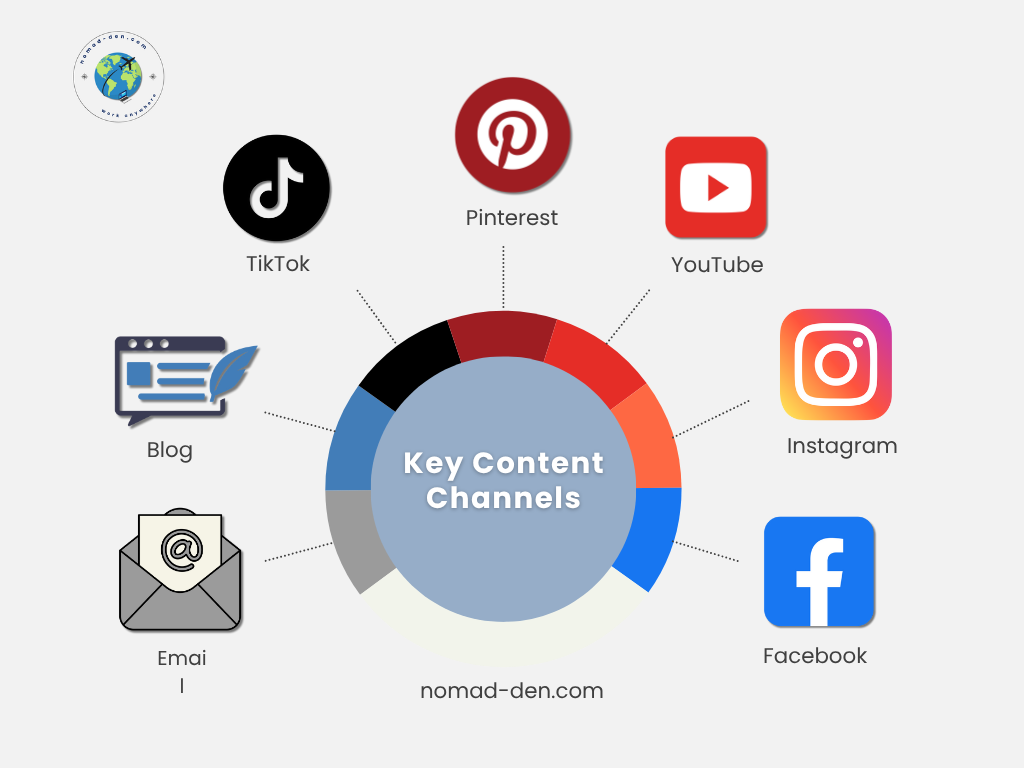
Building Your Audience Through Content
With the foundation of your online business in place, it’s time to attract your target audience. Content creation is key to building a successful online presence. By producing high-quality content—whether through blogs, newsletters, or social media—you can establish authority, draw in your audience, and convert visitors into loyal customers. Effective content not only drives traffic but also builds trust and credibility in your niche.
Wherever you decide to post your content, consistency is vital. Equally important is maintaining high quality. Don’t rush to keep up with the Joneses—comparison is the thief of joy. Take time to ensure your content is thoughtful and valuable. This will earn you more respect in the long run.
While developing your content, it’s essential to include elements that optimize it for search engines. Incorporating keywords, meta descriptions, hashtags, and other SEO tactics can attract the right audience and boost your online presence. One powerful resource is Mangools, a well-recognized company offering five easy-to-use SEO tools that can help you level up your SEO game.
Creating Content That Attracts and Converts
There are four core forms of content you can create, with many apps and websites available to help you produce them. Below, we’ll cover the most popular and effective types for you to consider:
- Blogging: Establish authority and develop your writing skills by sharing valuable insights and knowledge through blog posts.
- Email Newsletters: Keep your subscribers engaged and informed with regular emails that provide updates, tips, and exclusive content.
- Social Media Posting: Encompasses platforms like Facebook, Instagram, and Pinterest, where you can share a variety of content, including images, short clips, and slideshows.
- Video Content: Focuses on platforms like YouTube and TikTok, where video is the primary content format, including longer-form videos and short clips.
Wherever you choose to share your content, remember that while you’re not obligated to stick with just one platform, it’s often recommended when starting out. Focusing on one allows you to create higher-quality content and build confidence without spreading yourself too thin. Once you’ve developed your skills and systems, you can expand at your own pace.
Conclusion
Building an online business through affiliate marketing isn’t about quick wins—it’s about creating value, building trust, and staying consistent. Always disclose your affiliate links clearly, in accordance with FTC guidelines. By focusing on fundamentals like choosing a niche, developing content, and optimizing your online presence, you’re laying the foundation for long-term growth. Keep showing up, keep learning, and remember: small steps lead to big results.
Continue Reading Related Posts
- Escape the 9–5: Build a Successful Online Business Today
Start here for a beginner-friendly blueprint to launch your business from scratch—no fluff, just real steps that work. - Systeme for Your System: The Budget Business Builder
Learn how to build your online business with powerful tools—without spending a dime. - Funnels 101: A Brief History and Evolution
Explore how funnels went from old-school tactics to modern, high-converting digital systems. - Leveraging A2 Hosting for a Faster Website: Why Speed Matters
Learn how better hosting can boost your load times, user experience, and SEO performance.
